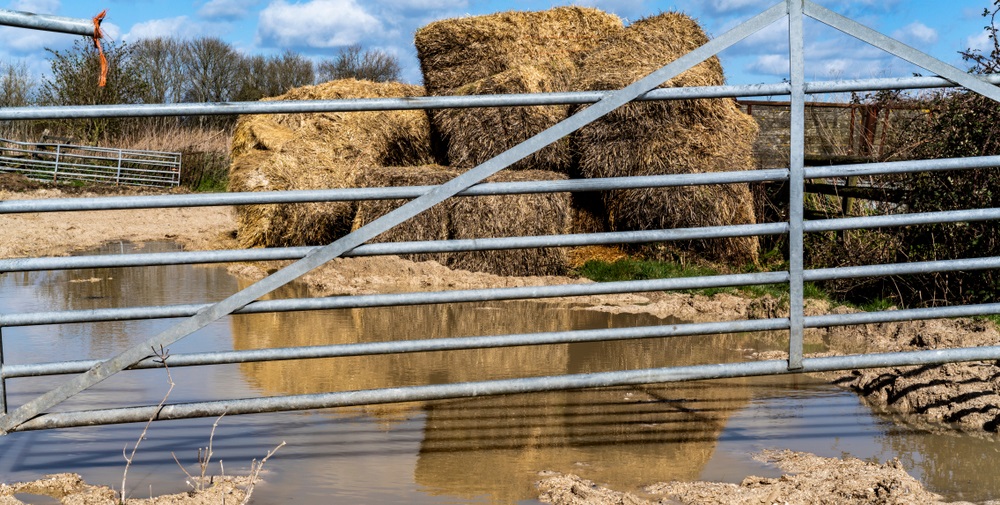
Clostridial Diseases in Horses: Understanding, Prevention, and Treatment
Whinny’s Wisdoms

Hey everybody, Whinny here! This week I’m talking about a tiny little microscopic thing that can have a huge impact on our equine friends. Clostridial diseases are a group of potentially life-threatening bacterial infections that can affect horses. While these conditions can be rare, they can be extremely dangerous when they do occur. We’ll delve into the world of clostridial diseases in horses, including their causes, symptoms, prevention, and treatment options.
Understanding Clostridial Diseases
Clostridial diseases are caused by a group of bacteria known as Clostridia. These bacteria are commonly found in the environment and in the gastrointestinal tracts of horses, making them a constant risk. When conditions are favorable for their growth, Clostridia can produce deadly toxins, leading to various diseases in horses.
Common Clostridial Diseases in Horses
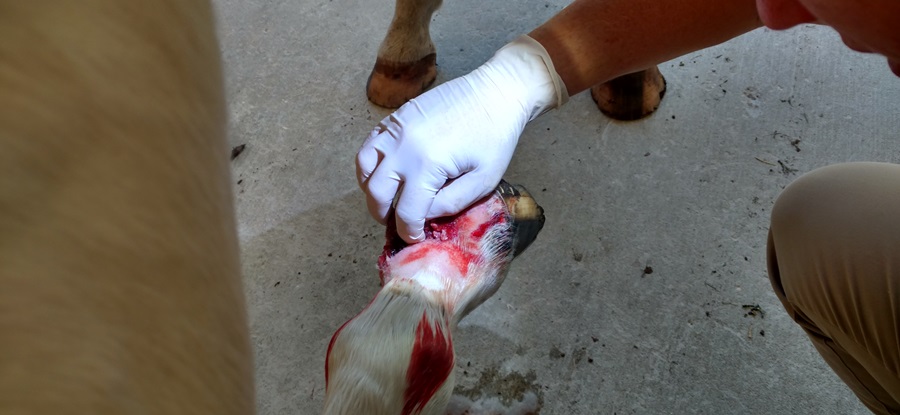
- **Tetanus**: Clostridium tetani is perhaps the most well-known clostridial disease in horses. It occurs when the bacterium Clostridium tetani enters the body through wounds or injuries. Tetanus is characterized by muscle stiffness, difficulty swallowing, and spasms. Vaccination against tetanus is a crucial preventive measure, especially since horses are more sensitive than other species to tetanus. It is important to vaccinate horses every 6 months against tetanus.
- **Botulism**: Botulism is caused by Clostridium botulinum and can result from the ingestion of contaminated feed or forage. Large round bales and compacted hay cubes or hay bales have a higher risk of becoming contaminated. Horses with botulism experience muscle weakness, paralysis, and difficulty eating or drinking. Immediate veterinary care is essential.
- **Malignant Edema/Gas Gangrene**: Clostridial myositis is a serious condition also known as malignant edema or gas gangrene. It can occur when Clostridia bacteria are introduced into the muscle, often due to improper intramuscular injection with Banamine (flunixin meglumine). It results in painful swelling, lameness, and systemic illness.
Prevention
Preventing clostridial diseases in horses primarily involves vaccination, good management practices, and safe injection techniques:
- **Vaccination**: Ensure your horse is up to date with vaccinations for tetanus, botulism, and other relevant clostridial diseases. Consult your veterinarian for the best vaccination schedule.
- **Wound Care**: Properly clean and care for any wounds or injuries to minimize the risk of bacterial entry. Maintain a clean environment.
- **Feed and Forage Hygiene**: Pay close attention to the quality and storage of feed and forage to prevent botulism. Avoid feeding spoiled or contaminated forage.
- **Injection Safety**: Ensure proper injection technique, site sanitation, and needle hygiene to prevent the introduction of Clostridia into muscle tissue. Known how medications are suppiosed to be administered and which medications should be given by a trained professional.

Treatment
If you suspect your horse may have a clostridial disease, immediate veterinary intervention is crucial. Treatment often involves aggressive supportive care, including antibiotics and wound management in the case of tetanus or clostridial myositis. Severely affected horses may require hospitalization.
Conclusion
Clostridial diseases in horses are rare but dangerous. Prevention through vaccination, good management practices, and safe injection techniques is essential. Being informed about the potential risks and early recognition of symptoms can help protect your horse from these life-threatening conditions. Always consult with your equine veterinarian for guidance on vaccination schedules and other preventive measures to keep your horse healthy and safe.
Until next week,
~Whinny
P.S. Did you know that the podcast my docs created, called Straight from the Horse Doctor’s Mouth, is the #1 equine podcast in the world? It’s true! Depending on the day, it’s somewhere in the Top 5 Pets and Animals podcasts on Apple Podcasts, and has been #1 many times. That means it’s beating out all those dog and cat shows! You horse people definitely love this podcast, and I just wanted to say thanks for listening on behalf of the humans here at the Clinic. If you haven’t discovered it yet, you can check it out over on the Podcast Page of my website.
 Whinny’s Wisdoms is the official blog of Whinny the Clinic Mouse at Springhill Equine Veterinary Clinic in Newberry, Florida. If you liked this blog, please subscribe below, and share it with your friends on social media! For more information, please call us at (352) 472-1620, visit our website at SpringhillEquine.com, or follow us on Facebook!
Whinny’s Wisdoms is the official blog of Whinny the Clinic Mouse at Springhill Equine Veterinary Clinic in Newberry, Florida. If you liked this blog, please subscribe below, and share it with your friends on social media! For more information, please call us at (352) 472-1620, visit our website at SpringhillEquine.com, or follow us on Facebook!
[jetpack_subscription_form title="Subscribe to Whinny's Wisdoms"]

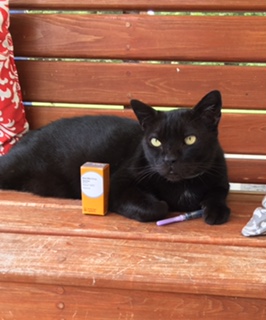
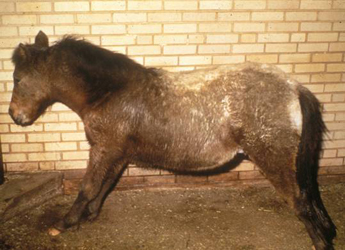
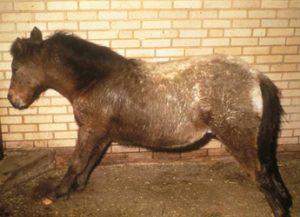 What this looks like is a horse with all 4 limbs stiffened (often called a “sawhorse” stance), a tight or locked jaw, and the third eyelid flashing across from the corner of the eye. The horse may be lying down with all 4 limbs extended, unable to stand. Eventually the tetanus toxin binds to the muscles used to breathe, leading to death.
What this looks like is a horse with all 4 limbs stiffened (often called a “sawhorse” stance), a tight or locked jaw, and the third eyelid flashing across from the corner of the eye. The horse may be lying down with all 4 limbs extended, unable to stand. Eventually the tetanus toxin binds to the muscles used to breathe, leading to death.